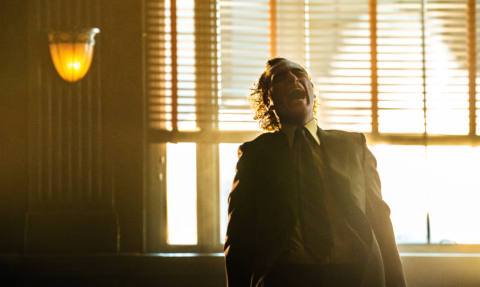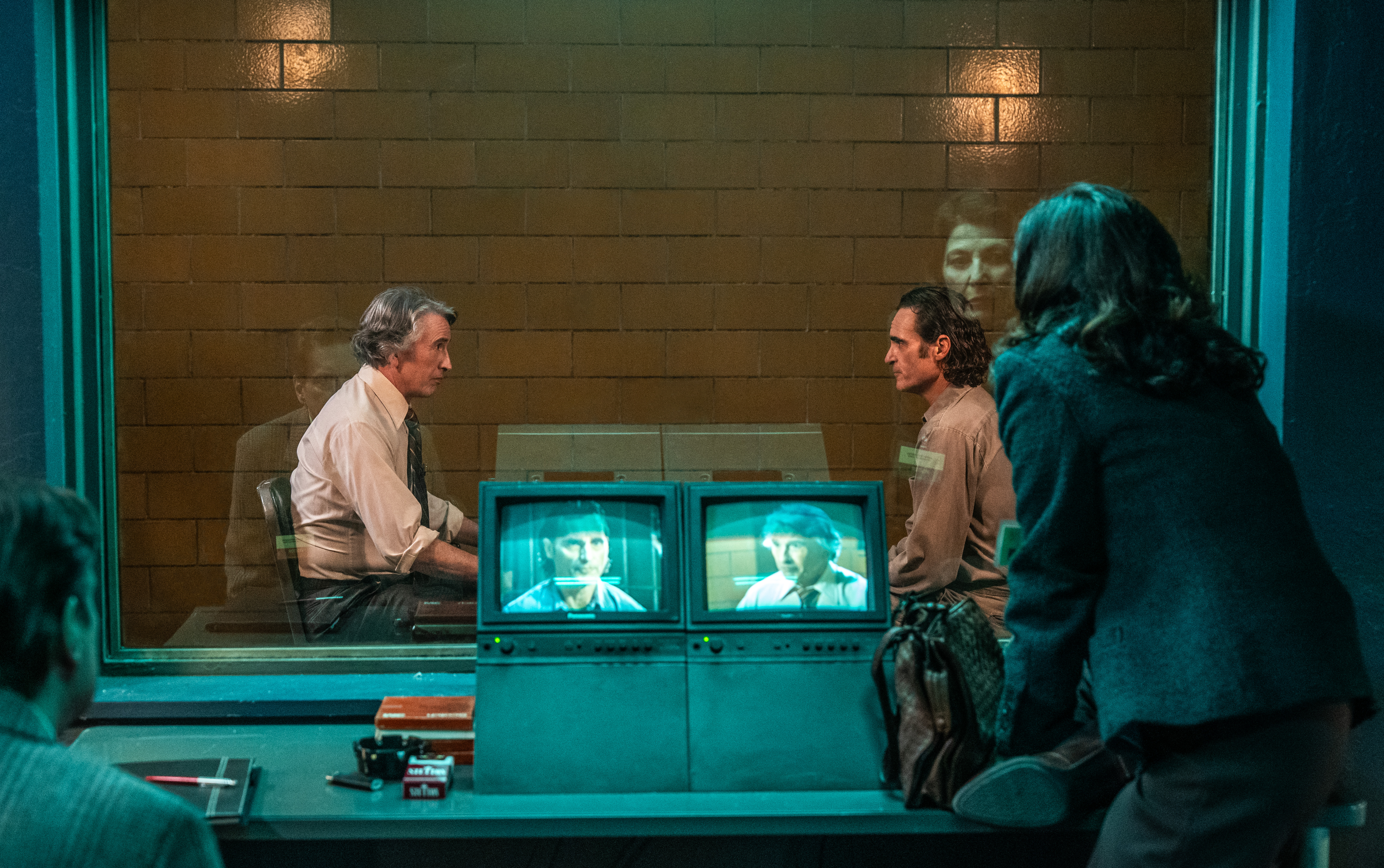
The mythology of 2019’s Joker is that writer-director Todd Phillips really just wanted to make a dark character study in ’70s-style film realism, à la Martin Scorsese’s 1982 feature The King of Comedy. The kind of film, he said, that couldn’t be made in the modern studio system. The “comic book” of it all was a means to an end, and the fact that the Joker had never had a definitive origin story meant Phillips had more freedom to construct his own take.
But he and co-writer Scott Silver still couldn’t entirely steer clear of Batman lore or comic book movie trappings: The first Joker features an extended subplot teasing that hapless protagonist Arthur Fleck (Joaquin Phoenix) might be Bruce Wayne’s secret half-brother, and there’s a Batman origin story sewn straight into the movie’s climax. Like its predecessor, the sequel, Joker: Folie à Deux — which sees Phoenix reprising his role as Arthur Fleck/Joker, and Lady Gaga joining as Harleen Quinzel — is full of contradictions, playing fast and loose with Fleck’s nature, the question of who’s to blame for his deeds, and the reality of the story itself.
And just as they were with Joker, Phillips and Silver are still a little too in love with their own premise, leaving whatever message Folie à Deux might want to deliver obscured.
Folie à Deux picks up with Arthur in Gotham City (here played by a fictionalized 1970s New York), at the mercy of abusive guards in Arkham Asylum’s maximum security ward, as he awaits trial for the murders he committed in the first movie. Lady Gaga plays fellow inmate and Joker fangirl Lee, whose affections encourage him to push back when his lawyer, Maryanne (Catherine Keener), pushes him toward an insanity plea. A lot of what follows plays out in musical sequences in varying states of diegesis, turning Folie à Deux into a jukebox musical that taps into Warner Bros.’ library of musicals, among other song sources.
From there, Phillips and Silver present a bewildering slew of conflicting ideas: The defense attorney and the pushy psychiatrist working with her, who say Fleck has a split personality and is not in control of his faculties — they don’t understand him. But district attorney Harvey Dent (Harry Lawtey), his chosen psychiatrist, and the TV reporter (Steve Coogan) who argue that Arthur is sane — they’re absolute tools. But also, the people who have adopted “the Joker” as the figurehead of a revolution-ish movement are shallow thrillseekers projecting their own hypocrisy onto him.

Fleck is the hero, he’s cool, he really Gets It, Man. Also, he’s pathetic and gross and bad at sex. He’s bullied by everyone around him and can’t defend himself, so we should be afraid for him — but also, we should be afraid for anyone left alone in a room with him, because he’s so unpredictable. He was abandoned by a callous society, the cause of his antisocial behavior; he just needs help and sympathy. Also, he’s killed multiple people in cold blood and feels little remorse about that. The way Arkham treats its high-security patients is inexcusable; these people are victims who need real help. But also, some of them are totally cracked, madhouse killers, just like in your favorite slasher movies.
There are great stories that ask questions without answering them — including many works of pop cinema. However, Folie à Deux’s messaging doesn’t come off as artfully ambiguous, just so mixed that it could support any interpretation. If Phillips has a message he’s trying to convey, it might be a repudiation of the fans who took Joker’s protagonist as a rousing nihilistic icon. But he undercuts himself there, too.
Once again, his camera romanticizes Fleck’s momentary emotional vulnerabilities, and takes the same relish in presenting Phoenix’s spooky movements, unsettling laughter, and capacity for violence as it did in Joker. And by avoiding any specificity about what Fleck’s Joker-pilled supporters (the on-screen ones, at least) actually want — the class warfare trappings they espoused in Joker are notably absent here — Phillips and Silver give off-screen fans plenty of space to discard the bits of these movies that don’t fit with their conceptions, and embrace the ones that do.
Even Folie à Deux’s framing of its internal reality is muddy. The musical numbers are fantasy sequences, except when characters are actually singing, except that sometimes it’s also left ambiguous. Phillips and Silver aimed to script a mature movie examining a complex character, and not just another phoned-in comic book punch-fest — but they also couldn’t resist slapping Harvey Dent in here as the crusading district attorney, and making sure he gets his origin story before the credits roll. (Not to mention wedging another supervillain “cameo” into the final scene.)
The truth, whether or not Phillips would want to admit it, is that his rapt framing of Phoenix’s performance, his dedicated homage to ’70s grit and ’60s musical fantasy, the smugness of a script that omits the punchline from a knock-knock joke and submits that as smart character commentary — these things are not so distant from the rule-of-cool, Easter-egg-hiding, smug-quip-dropping world of comic book cinema as he would like to imagine. Joker and Folie à Deux are no less indulgent than any other films resting on the legacy of generations of work-for-hire comics artists whose output currently falls under the ownership of the Warner Bros. Discovery conglomerate. Phillips just wants you to think it is.
